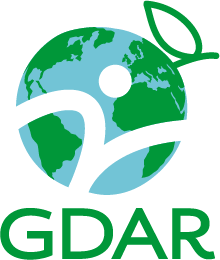The COVID-19 pandemic, and other emergent diseases, are influenced by global forces including urbanisation and changes to our environment and climate. In addition, the severity of COVID-19 symptoms are exacerbated by obesity and non-communicable diseases.
Such syndemic emergencies are likely to increase in frequency, and have the potential to disrupt diets and physical activity – as well as being influenced by them.
Experiences of COVID-19 mitigation in GDAR Network partner countries confirm the precariousness of healthy diets and physical activity, particularly for those without access to resilient food systems or healthy built environments.
The pandemic has further revealed an absence of evidence-informed guidelines and strategies to protect, maintain and promote healthy behaviours during emergencies.
Research approach
The GDAR Network aims to investigate the diet and physical activity impacts of community and policy actions in response to the COVID-19 pandemic.
The goal is to identify practices, policies, people and systems that have provided resilience against COVID-19. These have the potential to inform the design of interventions that support diet and physical activity in the face of other emergencies and disruptions.
We will explore COVID-19 response in two different contexts.
1. COVID-19, community action and the food environment
Examining longitudinal changes in food security and the food landscape in Kenya during the coronavirus emergency
The COVID-19 pandemic has disrupted food supply globally. In Kenya, poor households are disproportionately affected due to a combination of economic shocks coupled with restricted movement measures and the closure of traditional markets. Preliminary research indicates reductions in food security and dietary quality, particularly in low-income households and those who rely on markets as a food source.
Rotating Savings and Credit Associations (ROSCAs) are “groups of persons that agree to contribute a fixed amount of money at regular intervals, into a common fund, which is then withdrawn in turn, by each member of the association”. They are found in almost every low and middle income country, and act as informal financial institutions, typically providing credit to low-income consumers that often do not have access to more formal financial services.
ROSCAs are used for a variety of purposes, but many are explicitly oriented around food. In Kenya, these started as small ‘chamas’, a network of women who pool resources and buy each other food items on a rotational basis. These have developed into formal societies and it is estimated that there are currently more than 300,000 chamas controlling a total of Ksh 300 billion (equivalent to £2 billion GBP) in assets.
Previous research has shown that chamas can be tailored for health-related goals such as increased uptake of maternal services. Anecdotal evidence suggests chamas have been playing a prominent role during the COVID-19 pandemic. By exploring the role that chamas are playing in household food security in the context and aftermath of the pandemic, we will explore the potential for chamas to be tailored to promote and protect healthy household food security, particularly during crises such as disease outbreaks, climate change-induced societal disruptions and during periods of war and conflict.
2. COVID-19, policy action and the built environment
Healthy urban planning in South Africa (Cape Town and Johannesburg), Kenya (Kisumu) and Jamaica (Kingston)
COVID-19 mitigation measures have required policymakers from across sectors to work rapidly in ways previously considered challenging or impossible.
We will examine successes and failures to adapt the urban environment during the pandemic, to develop a better understanding of the different policies and governance mechanisms that have applied across different policy sectors.
This will provide the opportunity to identify ways to change the built environment to better support healthy diets and active living – particularly with regard to socio-economic inequalities and ecological vulnerabilities.
Potential methods will include stakeholder consultation, desktop review of national and local policies across relevant sectors and key informant interviews to understand policymaker perspectives and experiences.
